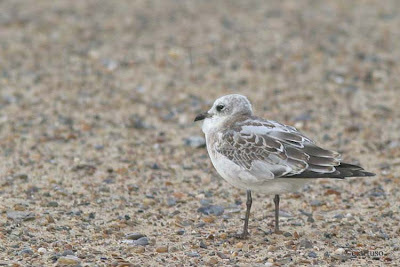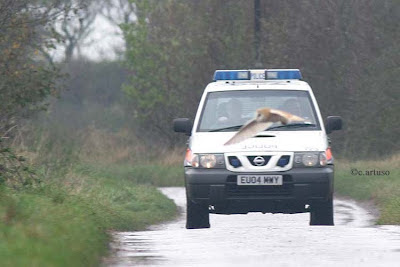This is the first of a two-part series to illustrate a few of the common birds of Great Britain. Over the years, I have made infrequent short trips to the U.K to visit family and squeezed in a little birding on the side so I have by no means seen all of the avian treats of the British Isles. I did however think that it might be worth a couple of posts on some of the common species that visitors might see. I also have to thank some kind local birders who showed me around from time to time.
The British Isles and western Europe in general do not have many breeding bird species compared to other parts of the northern hemisphere. This is said to be due at least in part to the history of glaciation and the massive extinction rates in Europe during glaciation. North America by virtue of the north-south orientation of her mountain ranges and eastern Asia by virtue of large relatively ice free refugia during glaciation did not suffer extinction rates as high as in Europe (where the major mountain ranges are predominantly east-west in orientation and their frozen peaks prevented southward escape for many species). Of course, human land use may also have something to do with this. A famous statistics is the ratio of tree genera in boreal forests in Europe : North America : Siberia that comes out approximately to 1:3:6 (i.e. for every tree genus in a European boreal forest there are three in a comparable forest in North America and six in eastern Asia). Nonetheless, there is some great birding to be found on the British Isles and they do get a lot of vagrants and rarities blown in from North America, Siberia and elsewhere and birders here focus strongly on finding rarities. Of course, many now famous birding traditions like twitching have their origins in the U.K.
It is not hard to find ponds or small lakes Some natural some not) in the U.K and water birds abound both inland and in the coastal areas. One of the most commonly seen, even in urban parks, is the Mute Swan. As this species has been introduced into other parts of the world such as North America, it will be familiar to many outside of Europe with their characteristic red beak and black knob atop the upper mandible. I have always wondered why they are called Mute Swan since they can be very loud at times (maybe because they seem to make more snorts and grunts than the more bugle like calls of other European swans??).
As large as the Mute Swan but with a yellow rather than red beak is the Whooper Swan that breeds in northern Europe and winters in the U.K. Note how the yellow on the beak extends forward past the nostril in a point. This bird had a broken wing and was over-summering in Britain as it could not make the migration north.
Smaller than the previous two swans, the Bewick’s Swan is often considered conspecific with the North American Tundra Swan. This swan has more yellow on the beak than the North American Tundra Swan but less than the Whooper Swan (note the square ended appearance of the yellow, not extending past the nostril, visible even in this distant photo). Bewick’s Swans are also migrants and winter visitors to the British Isles.
One of the many common duck species here is the Tufted Duck (highly sought after as a vagrant by North American birders but abundant in much of Europe and Asia).
There are lots of beautiful geese to behold including the magical little Barnacle Geese that over winter in northern U.K. I find their black and white plumage particularly striking.
Also in black and white, the Brent Goose, or just “Brent” or “Brant” if you are North American, (note that the pronunciation is the same despite the difference in spelling), is more coastal in their distribution (note habitat in this photo). The Brent/Brant that winter in the U.K (nominate subspecies, sometimes called Dark-bellied Brant) is to my mind at least intermediate in terms of darkness in the belly between the Pale-bellied Brant of eastern North America and Greenland (subspecies hrota also known as Atlantic Brant) and the Black-bellied Brant (subspecies nigricans also known as Pacific Brant) of western North America and easternmost Siberia. Some taxonomists have treated these three forms as separate species though this is not commonly accepted.
There are quite a few “brown” geese in the Palearctic Realm (northern Eurasia) and some of them require scrutiny for correct identification. One that North Americans will be familiar with is the Greater White-fronted Goose.
There are both resident and migratory and "feral" populations of Greylag Goose in the U.K and it is not always easy to know which you are looking at.
A common waterside bird is the
Grey Heron (
Gray Heron is you prefer American spelling) which is very similar to the Great Blue Heron of North America (minor differences include the flank colouration).
The
Eurasian Coot lacks the red on the frontal shield of the American Coot.
The
Common Pheasant (a.k.a
Ring-necked Pheasant or simply
Pheasant) is originally from Asia and was introduced into Great Britain and other parts of western Europe many centuries ago and into North America more recently. Note that not all the subspecies have a white neck collar as shown here. This is now a very common bird in the U.K.
The handsome
Red-legged Partridge is also introduced into Britain, yet another example of the long-standing practice of introducing game species outside of their natural range.
Though nowhere near as exciting as shorebirding on the east Asian flyway, the U.K offers some good shorebirding in season. Note of course that the British refer to shorebirds (sandpipers, plovers, etc.) as "waders", whereas most North Americans use the word "waders" to refer to the “long-legged waders” such as herons and ibises. I particularly enjoyed comparing similar Eurasian versus North American congenitors and study their differences. For example, the Palearctic and the Nearctic each have two godwits (genus Limosa, large shorebirds with upturned bills) – in Eurasia, Black-tailed and Bar-tailed and in the Americas, Marbled and Hudsonian. These are affectionately referred to as blackwits, barwits, marwits, and hudwits, respectively. In Europe the larger Black-tailed Godwit is associated with wet meadows and marshes and is somewhat similar in niche to the American Marbled Godwit. The smaller Bar-tailed Godwit is more of a tundra breeder (though not exclusively) and more coastal in migration as shown here and hence somewhat similar in niche to the American Hudsonian Godwit. Of course, on both continents birders study the plumages of their godwits carefully to try to find a stay from the other hemisphere! In these two photos Black-tailed first then Bar-tailed, notice the more patterned upperparts of the Bar-tailed (you might also notice the short upper leg which can be a useful feature for finding them in North America). Both of these birds are juveniles (note breast colour). If you are wondering that is a Red Knot in the background of the photo of Bar-tailed Godwit (a shorebird species that is Holarctic in distribution, i.e. found in both Palearctic and Nearctic).


The Eurasian Curlew is much more widely distributed than the North American Long-billed Curlew. Note the white rump and underwing.
And like the aforementioned Red Knot there are other shorebirds here with a Holarctic distribution including the Purple Sandpiper (first photo below) and Dunlin (second photo).
Within the plover family there are also many beautiful shorebirds /waders in the U.K. For those who come from places such as North America where lapwings don’t occur regularly, the Northern Lapwing is one of the most fascinating and unusual - i mean if I told you there was a crested shorebird with green plumage you might think I was batty. This beautiful species is fairly common in many parts of the northern Palearctic and occurs in large flocks in migration and winter as shown here.
Though “somewhat” familiar, the European Golden-Plover has a mostly European breeding distribution. This is the largest and, in my opinion, the most golden of the three Golden-Plover species (European, American and Pacific), i.e. has the most golden-brown upperparts in both breeding and non-breeding plumages (Pacific is a little more greyish brown and American is the grayest of the three). This is a flock in non-breeding plumage.
The Eurasian Oystercatcher has a black back (unlike the brown of American Oystercatcher) and the European birds in winter plumage has a white crescent underneath the eye often called a “chinstrap” (lacking in East Asian birds). I always thought that this was a curious plumage change (i.e. can’t think why this feature would develop).
Many larophiles (gull lovers) will want t to study the Eurasian species on their home soil so as to better pick them out when they occur as vagrants in North America. The abundant and ubiquitous Black-headed Gull will be one of the first seen (this is my attempt at an artistic fall photo).
Despite their name, The Common Gull is much less common than the Black-headed Gull. This is usually considered to be the same species that North Americans call Mew Gull, although some taxonomists consider them to be specifically distinct.
The Eurasian Herring Gull is likewise treated by some (including the I.O.C) to be a distinct species from the American Herring Gull but others consider them conspecific.
Lesser Black-backed Gull is a Palearctic species that is becoming increasingly common in North America by leaps and bounds and may now breed there. In the U.K they are extremely common! The first photo shows an adult and the second a juvenile (wit ha Black-headed Gull in the background). The British birds are the graellsii subspecies which are not quite as dark as the fuscus subspecies.
One of the most beautiful European gulls to my mind is the Mediterranean Gull. The adults have white primaries but notice the second cycle bird in the background that has dark primaries with white spots and then look at the second photo of a juvenile with dark primaries – a most curious (and i think unique) progression! These photo are taken in winter in non-breeding plumage, lacking the black head of breeding plumage.
There are only a few owl species in the U.K but in some parts at least the Barn Owls seemed fairly easy to see, even in daylight. I have to share this first photo of a Barn Owl flying in a barn, true to their name, although I am cheating a bit because the photo was taken in Holland after the World Owl Conference in 2007. To compensate, the second photo shows a British Barn Owl on the run from the law, presumably for a permit infraction.
On the raptor front, the Eurasian Kestrel is larger and a little less colourful than the American Kestrel.
There are quite a few pigeon / dove species in the U.K, the most common being the Common Wood Pigeon
And the
Eurasian Collared-Dove is also common here (many readers will be familiar with the way they introduced themselves into North America after receiving a helping hand as far as Barbados)
The
Great Spotted Woodpecker is the most common and easiest woodpecker to see.
The beautiful
European Green Woodpecker requires a bit more effort but is well worth a search!
I will post about some common British songbirds soon.



































No comments:
Post a Comment